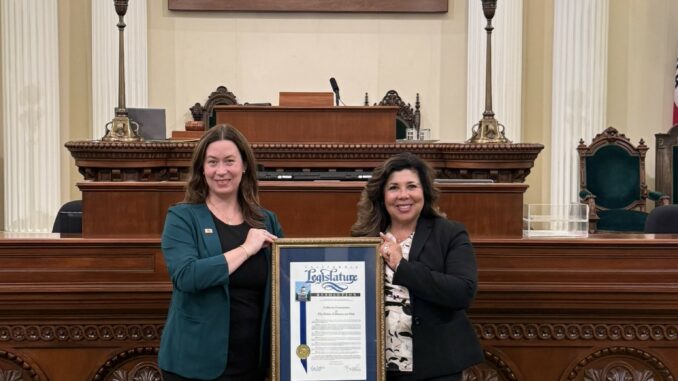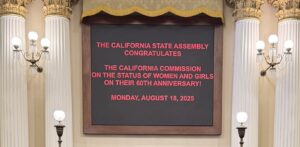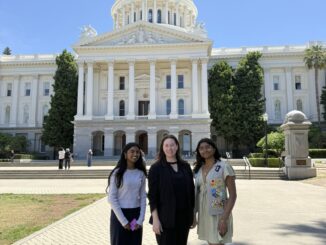
The California Commission on the Status of Women and Girls commemorates 60 years of fighting for the rights of women and girls
by Dorsey Griffith
One of California’s most influential voices for the state’s nearly 20 million women and girls turns 60 this year. The California Commission on the Status of Women and Girls (CCSWG) will celebrate its enduring presence and achievements at an anniversary event in Los Angeles on November 10.
Established as an independent state agency in 1965, the commission has been a steady, non-partisan force for promoting pay equity, employment opportunities, access to education, safety and other areas critical to advancing the interests of women and girls in California. In the recent past, for example, the commission built the post-pandemic “Women’s Recovery Grant Program,” which pumped $13 million into nonprofit organizations and local governments, which directly served over 90,000 women and girls.
But while the commission has achieved major wins over six decades, Commission Executive Director Darcy Totten acknowledges that many challenges remain.
“We have made huge progress, but many of the same issues still exist. Our collective structures, our economy, even our government, were not designed with women as full participants in mind.”
Darcy Totten, Executive Director, The California Commission on the Status of Women and Girls

the California Commission on the Status of Women
and Girls is a non-partisan force for promoting pay
equity, employment opportunities, access to
education, safety and other areas critical to
advancing the interests of women and girls in
California.
Photo Courtesy The California Commission on the
Status of Women and Girls
“We have made huge progress, but many of the same issues still exist,” Totten says. “Our collective structures, our economy, even our government, were not designed with women as full participants in mind. That is reflected in systems that are inequitable by default.”
The commission comprises a diverse group of 17 people, including nine public members, six legislative members, and two statutory members. Appointments are made by the Governor, the State Senate, State Assembly or by statute.
Each commissioner brings a different perspective to the commission’s work. Commission Chair Dr. Rita Gallardo Good is passionate about women’s empowerment and youth leadership. Her expertise is in ensuring equal access to education for marginalized students, women, and girls to enable career advancement, economic upward mobility, and pay equity.
Together with First Partner Jennifer Siebel Newsom, the commission supported the California Equal Pay Pledge initiative to encourage businesses to close the gender pay gap in California. Gallardo Good says she is proud of the progress the commission helped to make.
“After a year building awareness, many businesses and corporations signed onto the pledge,” Gallardo Good says. “We felt it was a good step forward… we made strides.”
Pay equity for women has long been a top priority for the commission. Former State Senator. Hannah-Beth Jackson was appointed to the commission in the late 1970s and elected chair in 1980. The commission has been at the forefront of championing equal pay since its former chair, Senator Hannah Beth Jackson, took the lead on the issue in California. She authored the California Fair Pay Act and several subsequent pieces of legislation and convened a first-of-its-kind equal pay task force in 2016.
Although the commission successfully tackled sexual assault, domestic violence and childcare issues, the fight for equal pay was a thornier one, as many men in the legislature did not support the promotion of women in the workforce. It wasn’t until Gov. Jerry Brown’s second term in 2015 that Jackson’s SB 358, the California Fair Pay Act, was signed into law. It prohibited discrimination in pay for substantially similar work based on gender.
“I refer to SB 358 as my 35-year overnight success,” she quipped. “The bill was the strongest equal pay bill in the country and became the legislative model for 42 other states.”
Jackson, of Santa Barbara, acknowledged there is still work to be done to ensure equal pay for women.
“We need to keep leaning on this,” she says, “because our rights are being eviscerated as we speak.”
Totten is not deterred.
“We have a huge project ahead of us, building collaborative efforts with women across the state to not just prevent the rollback of specific rights, but to put in place an equitably designed future in which women, half the population, are not left out,” she says. “A future where we are all thoroughly considered, and our needs and our contributions are recognized and included.”
For more information on the California Commission on the Status of Women visit women.ca.gov



